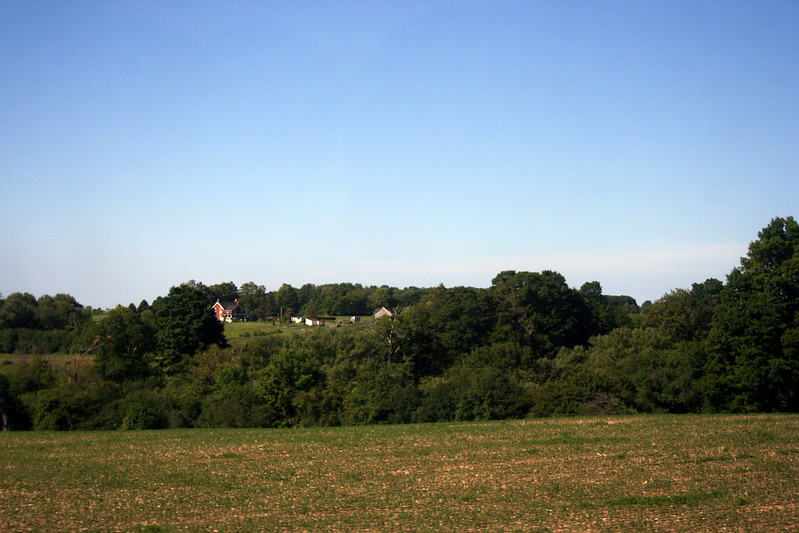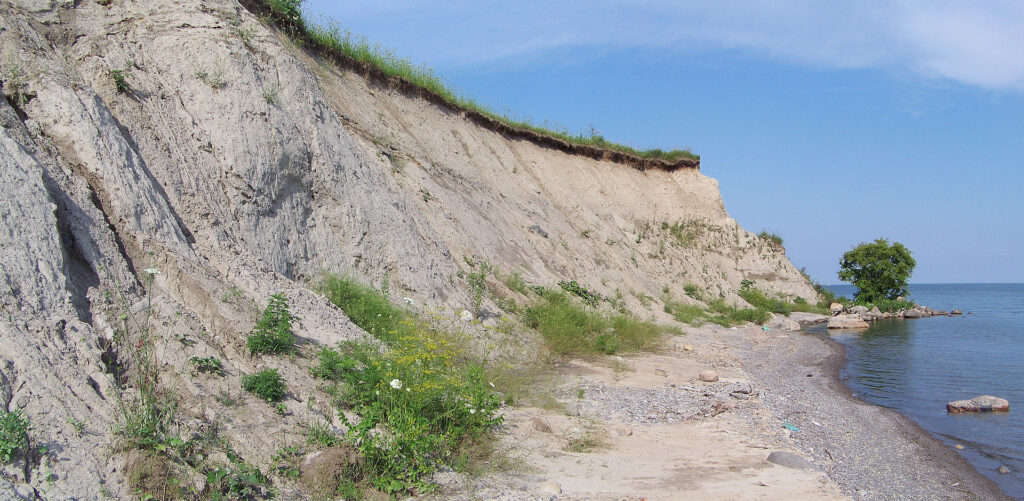Bowmanville is the largest community in the Municipality of Clarington. It is a delightful town perched on the banks of the Bowmanville Creek, it houses the municipal offices of Clarington.
Clarington is a municipality that forms the westernmost part of Durham Region. Bowmanville has many interesting and integrated communities around it, such as Courtice Village New Castle Village Orono etc. The largest town in Clarington’s jurisdiction happens to be called “New Castle”.
The population of the municipality is 92,000. Most of the population is concentrated in Bowmanville.
There are many reasons why Bowmanville and the surrounding region of Clarington are wonderful places for families to call home.
History
Bowmanville has a rich history, characterized by progress through hard work. The area that is now known as Bowmanville was first inhabited by indigenous groups. Huron, Haudenosaunee, and Mississauga Ojibwe people all lived in the area.
European settlement in the area began with an incentive from Lieutenant-Governor Simcoe. He offered 200 acres of land for free if they would come and settle Clarington, which at that time was heavily forested (and required back-breaking labour).
There were no roads in the region and settlers had to travel mainly by foot. The Kingston Road was built in 1817 by Asa Danforth. It connected Toronto to Kingston and passed through the Bowmanville area.

By 1866, Bowmanville’s population was about 3,500. In this year, the town was connected to the rest of the country by the Grand Trunk Railway. There was a sizable port south of the town, on the shore of Lake Ontario at the mouth of Bowmanville Creek. The power of the local creeks and rivers was used for mills. Farmsteads, established on the land cleared by earlier generations, were very fertile.
As time moved on, life in Bowmanville was quiet but industrious. The towns in the surrounding area grew or faded in importance. Bowmanville continued to be the most significant settlement.
During the Second World War, Bowmanville was chosen to be a prisoner of war camp. The British Government wanted German officers away from Europe as soon as possible and was anxious for their safety before they could get captured so it would seem less likely that these soldiers were doing anything traitorous or harmful behind enemy lines (which may have been true). The Canadian Government agreed to help them. Many POW camps were set up across Canada. Camp 30 was established in Bowmanville in 1941. It was used to house high-ranking German officers. Despite the camp’s comfortable conditions, an outbreak of violence occurred. This incident is known as the “Battle of Bowmanville”. The uprising of prisoners was only suppressed after the Canadian Armed Forces interceded.
After the war, the peaceful atmosphere returned to the town. Bowmanville is now a popular community for people who are looking for a quiet place to live. It is situated away from more developed regions of the GTA. Yet, it does not involve sacrificing easy access to the most populated area of Ontario.
Overview
Clarington is a region of Ontario, Canada. The town of Bowmanville provides modern small-town living with its many amenities while scenic rural areas surround it on all sides including the Greater Toronto Area (GTA) for those who want more than just what they can get within their own community’s limits but still need plenty not too far away, either way, transportable by car or easy access if you happen to work outside Clarington itself! In addition, Durham Region offers services throughout this area so there will always be something available wherever you reside.
Living in Clarington, residents have a respite away from the hustle and bustle of more populated parts of the GTA. At the same time, more urban centres like Bowmanville, Courtice, and Orono feature all the amenities of living in bigger GTA suburbs.
Despite the smaller population of the region, Clarington is still a multicultural place. There are communities of Black, Filipino, and South Asian Canadians in the municipality.
Real Estate in Bowmanville
Most of the homes in the Bowmanville region are single-detached homes. More than 10,000 houses have been built around the region since the year 2000. On top of this, 28,000 homes in the area have 3 or more bedrooms.
This means that prospective home buyers can look forward to spacious homes. They can also expect relatively new homes with yards. Housing developments are concentrated at the Highway 401 and Highway 115 transit corridor. This proximity makes commuting to the GTA very straight forward.

If you are looking for more information about buying or selling property, reach out to us. We will be happy to help you. You can check our listings online, or contact one of our sales representatives.
Shopping
Bowmanville is not as large as other communities in Durham Region. Yet, this does not mean that it does not have convenient shopping experiences. Excellent and exciting shopping can be found both in Bowmanville and throughout Clarington.
Within Bowmanville, the Bowmanville Mall is the most significant shopping venue. This indoor shopping centre features many retailers and other businesses.
Bowmanville also has a picturesque downtown shopping district. This historic district is home to a wide variety of local businesses. This charming area is perfect for a day of shopping.
The Courtice Flea Market offers shoppers the opportunity to find unique items. The flea market stretches out over 12 acres. Hundreds of local vendors sell new and antique goods. There are many special events and markets throughout the year at the flea market.
North of Bowmanville, the village of Orono also features several shopping venues. One of these is the village’s historic downtown. Many shops and businesses are located in the downtown area. Downtown Orono also hosts several festivals throughout the year.
One focus of shopping in Orono is antiques. The village is home to some of Southern Ontario’s best antique shops. These shops showcase a vast array of unique collectables.
A Country Path will interest you if you want to visit different small rural businesses. They curate tours of small producers of various products. With A Country Path you can visit farmers, apiaries, potters, cider makers, and vintners.
Recreation
There are many options in and around Bowmanville for spending your free time.
Clarington operates many recreation centres within Bowmanville and throughout the region. The people of this municipality have access to many amenities including pools, gymnasiums and splash pads. These facilities make it easy for residents both young or old alike in maintaining their health by providing fitness programs that cater just about any need one might have!
Bowmanville also has a huge amount of green space. Lovers of the outdoors will adore the parks, trails, and playgrounds in the area. There are more than 70 parks spread throughout Clarington. The parks feature sports fields, baseball diamonds, tennis courts and basketball courts.

Hikers, cyclists, and joggers will find the ample amount of trails in the region a joy to use. Trails like the Bowmanville Valley Trail provide access to the great outdoors. This trail passes through the centre of town along the Bowmanville Creek. In the creek residents can watch trout and salmon run the river in the spring and fall. Salmon fishing from the trail is excellent. There are many other parks and conservation areas in the municipality. Some others are the Bowmanville Westside Marshes, the Orono Crown Lands, and the Clarington Waterfront Parks.
Schools
The four different school boards that administer Bowmanville’s schools are the Catholic, French and English Secular Organization for Education. There is also a fifth Board known as “French-language”.
The Catholic boards are Clarington Catholic District School Board and Conseil Scolaire Catholique MonAvenir. While Kawartha Pine Ridge District School Board and Conseil Scolaire Viamonde administer the secular schools throughout Clarington.
Transportation
Some people might think you need a car to live in Clarington. But this isn’t true! There is plenty of public transportation options and well-developed road infrastructure for residents here, too–especially considering how many major highways pass through the area (which means excellent access).
Travelling By Car
Several 400 series highways pass through Clarington. Bowmanville is within a ten-minute drive of all of these highways. The 400 series highways in Clarington are Highway 401, Highway 418, and Highway 407.
Highway 401 is the most significant highway in the region. It is the biggest and most used freeway in Ontario. It is the primary connection between the GTA and Bowmanville. On the 401, drivers can access any community near the Montreal-Windsor corridor.
Both the 418 and the 407 are toll highways. The 418 serves as a link between the 401 and the 407 to the north. The 407 provides a convenient link between Bowmanville and Markham.
Other significant roads in Clarington are Ontario Highway 2 and Ontario Highway 115. Highway 2 runs through the centre of Bowmanville. Downtown Bowmanville is centred on Highway 2. Highway 2 is a convenient connection between Bowmanville, New Castle Village, and Courtice. Highway 115 is the main connection between Bowmanville and Peterborough, passing through Orono. In Clarington, Highway 115 is concurrent with Highway 35.
Public Transit
Unlike many rural communities, Clarington has great public transportation. Durham Region Transit provides public transportation to Bowmanville and all of Clarington.
This system offers seamless travel anywhere within the Durham Region. Durham Region Transit makes convenient connections to GO Transit for inter-regional travel.
Travelling by Rail
Residents of Bowmanville also have great access to rail travel. GO Transit offers several bus routes that travel throughout Clarington. The buses carry passengers to the Oshawa GO Station. Here commuters can catch GO trains that travel throughout the GTA.
Additionally, VIA Rail trains stop at the station at Oshawa. Commuters can take VIA trains throughout Canada.
Have Questions About Real Estate in Bowmanville?
If you are seeking advice about real estate in the Bowmanville area, contact us. Frank Leo and Associates has more than 30 years of experience dealing in GTA real estate. With our experience, we can certainly help.